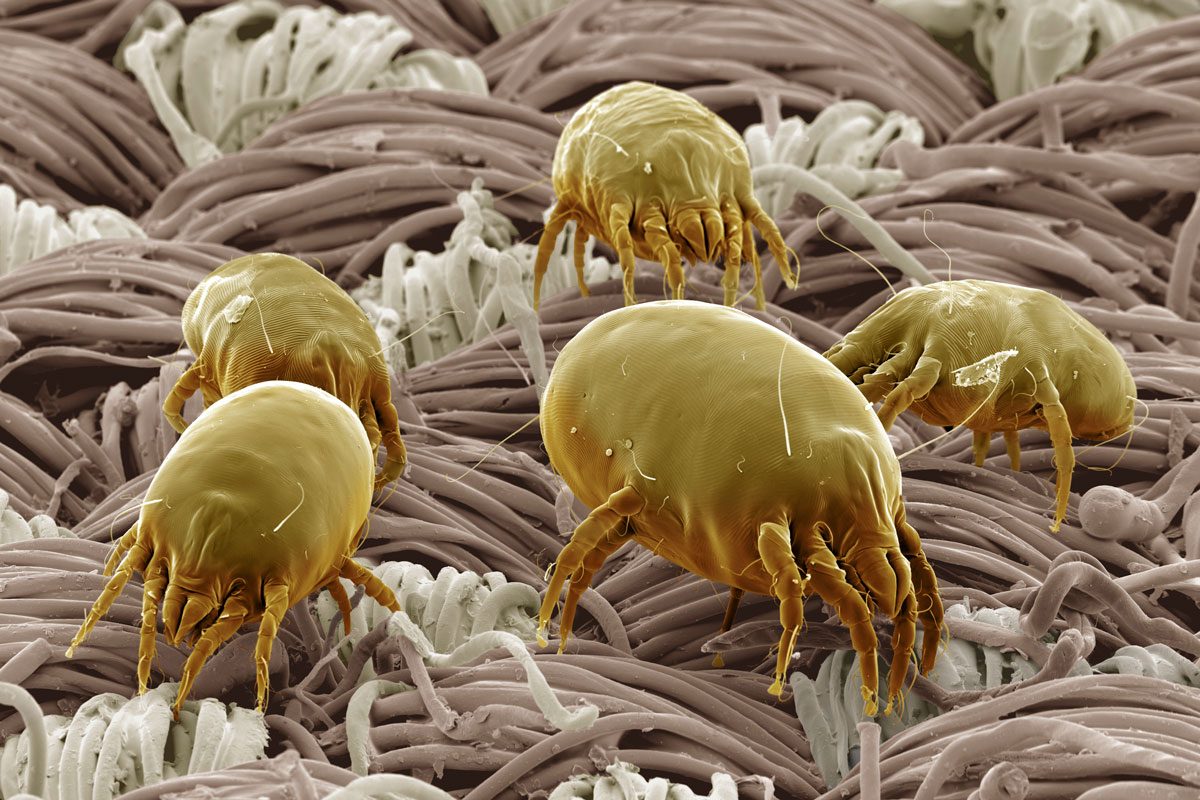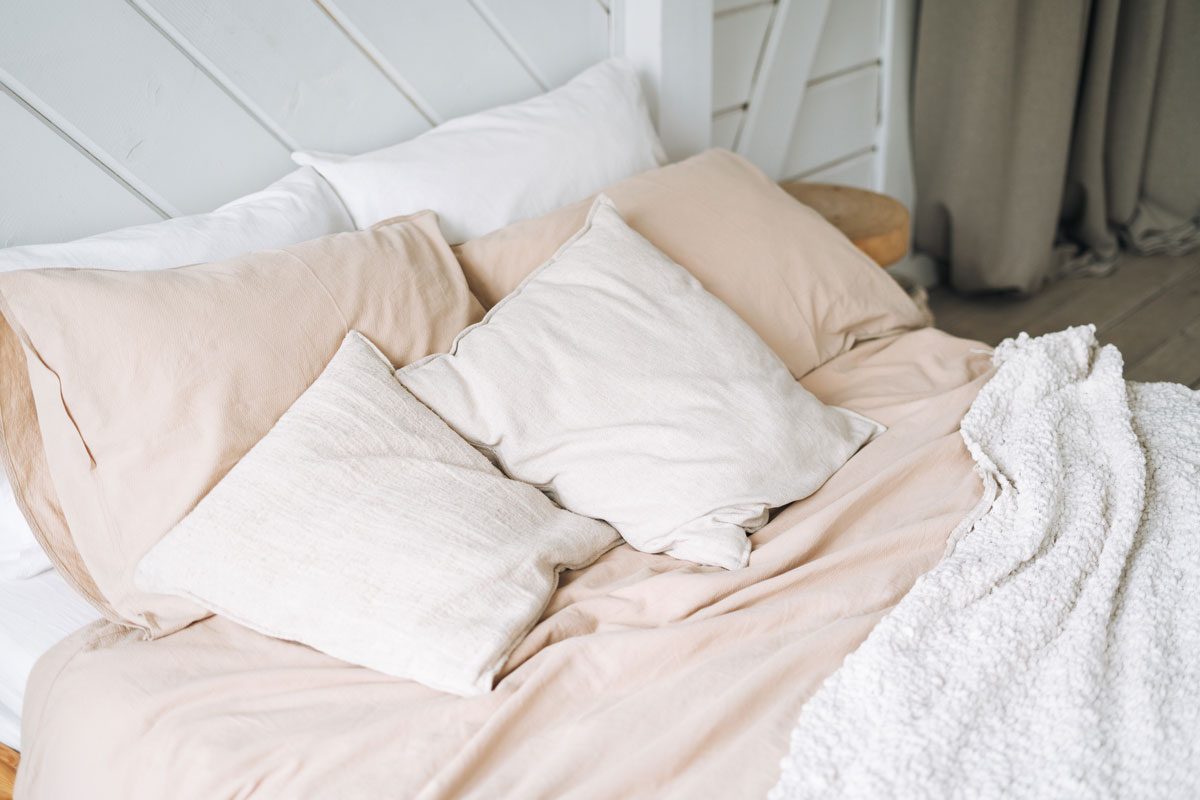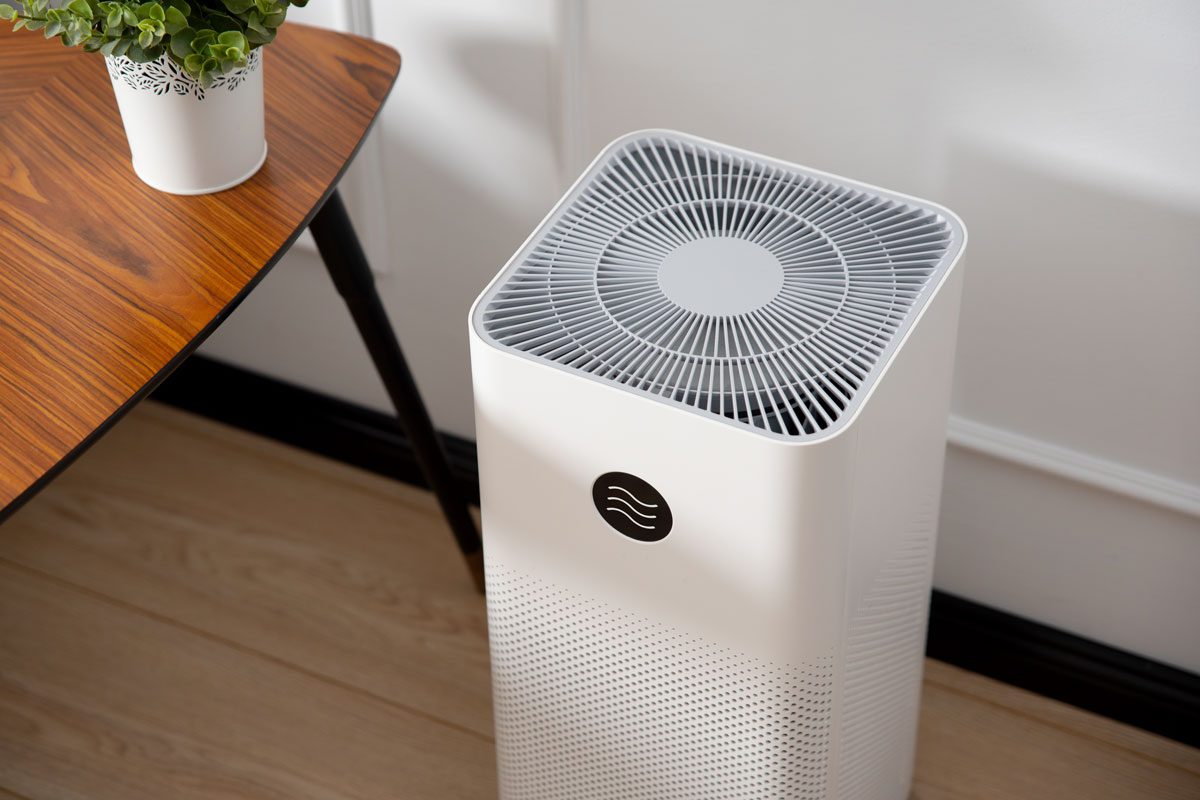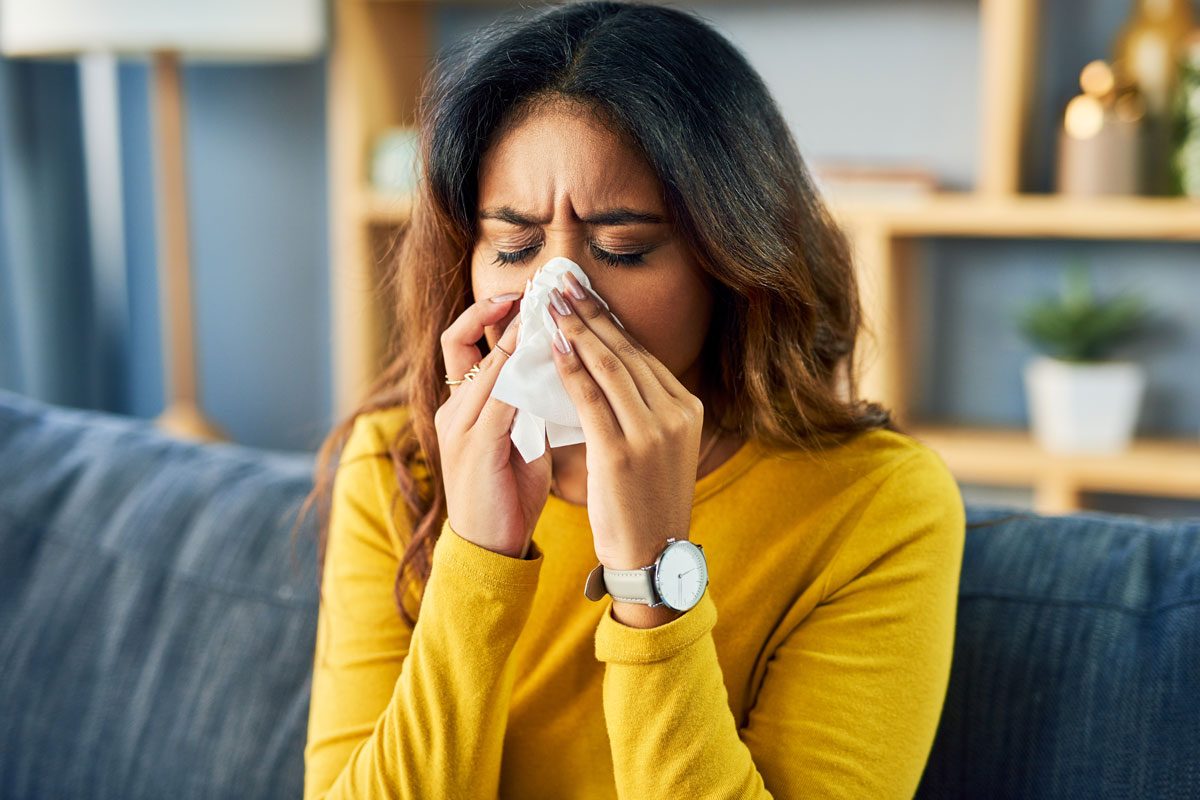From mattress covers to HEPA filters, there are ways to control dust mites and minimize allergy symptoms. Here's what allergists recommend.

11 Allergist-Approved Ways to Get Rid of Dust Mites

About the experts
|
Highlights
|
Dust mites are microscopic, spider-like creatures found in almost all households. And while you can’t see them, they can trigger health issues in some people—so it’s important to know how to get rid of dust mites in your house.
Other types of mites play important roles in the ecosystem. According to 2024 research published in the International Journal of Molecular Sciences, there are more than 55,000 types of mites, many of which act as scavengers and decomposers, breaking down dead plant and animal material into soil nutrients. House dust mites, on the other hand, tend to cause more harm than good. Per the research, they’re a leading cause of allergies, affecting up to 20% of the global population—and they’re a known cause of chronic conditions like allergic rhinitis and allergic asthma.
Even for people who aren’t allergic to dust mites, they can be what’s called a “sensitizer,” making someone more susceptible to allergic reactions from other sources, like mold, pet dander, or pollen.
What are dust mites exactly?
A dust mite is a tiny pest that’s only about one-quarter to one-third of a millimeter in size. Under a microscope, they look like white bugs with eight legs.
Unlike other notorious pests—like bed bugs—dust mites are not considered parasites because they don’t bite, but they do chow down on dead human skin cell flakes. On average, adults shed up to 1.5 grams of skin each day. This can feed 1 million dust mites, according to the American Lung Association.
Why do dust mites cause allergies?
While this invisible cleaning service might not sound like a bad thing, “Dust mite droppings contain proteins that can trigger allergic reactions with symptoms such as sneezing, watery eyes, coughing, and skin rashes,” explains Amy Myers, MD, a physician and leader in functional medicine and gut health, as well as a two-time New York Times bestselling author.
“Those who suffer from eczema may experience flare-ups due to dust mite exposure,” she says. “For people with asthma, dust mite allergens can exacerbate symptoms, leading to wheezing, shortness of breath, and chest tightness.”
Unfortunately, dust mites are always in season, says Stephen I. Wasserman, MD, an allergist and immunologist in La Jolla, California, and a spokesperson for the American Academy of Allergy, Asthma, and Immunology. “If you are allergic to dust mites, you will have the symptoms relatively regularly,” he says.
Where do dust mites live?

Roughly four out of five homes in the United States have detectable dust mite allergen levels in at least one bed, according to the American Lung Association. And they’re everywhere. Dust mites can make themselves at home in:
- Bedding
- Mattresses
- Upholstered furniture
- Carpets
- Curtains
- Stuffed toys
However, Dr. Wasserman notes, “If you live in a place that is high, dry, and cold, there will be fewer dust mites.”
How to get rid of dust mites
It’s a hard truth: Dust mites are hard to completely eliminate.
“Dust mites are an inevitable part of our homes and live in the fibers of bedding and upholstery—think mattresses, pillows, comforters, and carpets,” says Neeta Ogden, MD, an allergist and immunologist in Edison, New Jersey, and a spokesperson for the American College of Allergy, Asthma, and Immunology.
But you can take steps to reduce your exposure and minimize your symptoms. “A few simple lifestyle changes can make a big difference,” Dr. Myers says. That starts with closing off access to their favorite hiding spots.
1. Get dust-mite-proof covers
Dr. Myers recommends using allergen-proof mattress and pillow covers specifically designed to keep dust mites out and block access to your bed. These are cases or protective covers that act as a barrier beneath your normal bedding.
2. Choose the right bedding
As for your sheets, duvets, and pillowcases, 2024 research published in the journal Children says that finely woven textiles are most effective at keeping dust mites at bay. Choose bedding with a higher thread count made from materials like cotton, silk, or bamboo—fabrics that are considered hypoallergenic and naturally resistant to dust mites.
3. Use hot water
When it’s time to wash your bedding, use hot water to kill the dust mites.
“Wash sheets in hot water and hot dryer cycle once a week to kill off residual dust mite particulate matter,” Dr. Ogden says.
Even stuffed animals can collect and hold dust mites, Dr. Myers adds. But if the stuffed animal is too delicate or precious to wash, place it in a plastic bag in your freezer for 24 hours, as this will also kill the dust mites.
4. Wash bedding weekly

While washing bedding in hot water is best, even warm and cool water washing can be helpful to decrease the amount of dust mite exposure, says Christopher Brooks, MD, an allergist and immunologist at The Ohio State University Wexner Medical Center. The important thing is to make sure you’re washing your bedding on a weekly basis.
5. Choose different decor
Consider getting rid of carpet and opting for hardwood floors or area rugs instead. “Hard surfaces can be cleaned better than wall-to-wall carpet,” Dr. Ogden says. “Use rugs that can be regularly thrown in the wash.”
It’s also a good idea to skip fabric drapes and headboards, which can harbor mites. Instead, choose blinds and furniture you can wipe down, she says.
6. Get a HEPA filter

High-efficiency particulate air (HEPA) filters can help get dust mites and other allergens out of the air, says Karin Pacheco, MD, MSPH, an allergist and associate professor in the division of environmental and occupational health sciences at National Jewish Health in Denver.
Use a local HEPA unit that you can move from room to room. “My favorite [HEPA] air purifiers from AIRDoctor are designed to remove even the tiniest particles from your air, including viruses, pet dander, air pollution, and even cigarette smoke,” Dr. Myers adds.
7. Use a HEPA-certified vacuum
“When vacuuming dust or pet dander, you will want to ensure that your vacuum is not just spreading toxic air from one place to another,” Dr. Myers says. A vacuum with a HEPA-certified bag filter keeps dust and allergens in the vacuum, Dr. Ogden explains.
If you can pass the cleaning job off to someone without a dust mite allergy, go for it, says the AAFA. If you don’t have any takers, wear a mask when dusting or vacuuming.
8. Reduce the humidity in your home
“The best way to manage and reduce dust mite exposure is to keep humidity low,” Dr. Brooks says. Dust mites thrive in temperatures of 68 to 77 degrees Fahrenheit and prefer humidity. They don’t drink water, so they absorb moisture from the air. If it’s not humid, they won’t survive or multiply.
“It is best if humidity is kept below 35% all of the time because even spikes of humidity in the bedroom from a nearby shower, bath, or cooking space can be enough to allow dust mites to thrive,” he explains.
9. Minimize clutter
The Children research says it’s also important to get rid of unnecessary clutter in the house, as this can create dust traps that harbor dust mites and other allergens.
This could include your kids’ toys sitting in the corner collecting dust—but also pay attention to things like bookshelves and knickknacks on display. If you experience ongoing dust mite allergies, it might be best to minimize hard-to-clean, dust-collecting decor like shelving.
But if you have areas that could be dust traps, make sure to wipe them down regularly with a damp washcloth or microfiber cloth, which effectively traps the dust (and doesn’t just spread it around).
10. Steam clean
Even with protective coverings, dust mites can still make their way into your mattress and upholstered furniture. But the high heat from a steam cleaner can kill dust mites—with the added benefit of helping clear out mold, dirt, and bacteria while improving your overall air quality and the lifespan of household items.
Aim to steam clean your mattress, carpets, furniture, heavy curtains, and other hard-to-clean items in your house once or twice a year.
11. Try mint essential oil
A 2025 study published in PLOS One found that mint essential oil can make an effective dust mite-repellent spray. Just mix a few drops of the essential oil with water in a spray bottle to treat fabrics. The research explains that the mint kills dust mites on contact—and it confuses their senses, driving surviving mites away.
But steer clear of this solution if you have pets in your home—mint (among many other essential oils) can be toxic to cats and dogs.
Dust mite allergy symptoms

“Dust mites cause allergy by inhalation of their microscopic fecal matter and dead body parts, which are allergens,” explains Dr. Ogden.
Yep, it’s pretty gross. And it’s why you might have allergies outside the spring and fall allergy seasons. “This can lead to a more chronic allergy picture,” she says. “Year-round nasal congestion is classic for dust mite allergy.”
Symptoms of a dust mite allergy can include:
- Red, itchy skin
- Sneezing
- Sniffling
- Itchy eyes
- Cough
- Difficulty breathing
- Wheezing
- Coughing
- Shortness of breath
- Chest pain or tightness
- Difficulty talking
Treating a dust mite allergy
Since you can’t totally avoid or get rid of dust mites, treating your symptoms will help reduce some of your misery.
Immunotherapy, or allergy shots, gradually introduce small amounts of an allergen—in this case, dust mites—to your immune system in the hopes that it begins to recognize them without going into attack mode.
Other treatments are aimed at symptoms, Dr. Wasserman explains:
- If you are sniffling and sneezing, an over-the-counter antihistamine (like Allegra and Claritin) can help.
- If your eyes are itchy, then eye drops (such as Visine and Refresh) are available.
- And if dust mites trigger your asthma, your doctor can prescribe an inhaler and other treatments to make you feel better.
When to see a doctor for a dust mite allergy
“I recommend seeing a doctor to determine if you have a dust mite allergy when you begin experiencing ongoing allergy symptoms of nasal congestion, coughing, or breathing difficulties with little improvement after treating symptoms,” Dr. Myers says.
Repeated sinus infections and chronic sinus inflammation could also indicate an allergy, along with sleep difficulties and eczema flare-ups. “If you are noticing more frequent asthma attacks, it’s also recommended to see an allergist who can conduct a skin prick test or blood test to confirm dust mite allergies.”
For daily wellness updates, subscribe to The Healthy by Reader’s Digest newsletter and follow The Healthy on Facebook and Instagram. Keep reading:




















